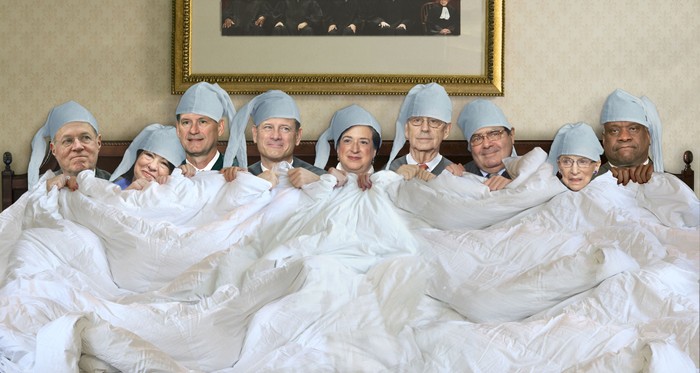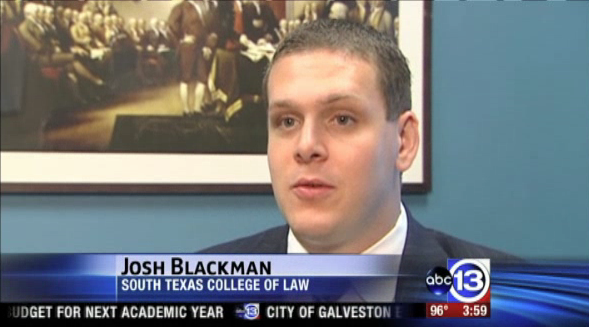I know nothing about the original understanding of the Indian Commerce Clause, but in Baby Girl, Justice Thomas aims to import the history from the Domestic Commerce Clause. That is, commerce means intercourse or trade, not economic activity.
The Indian Commerce Clause gives Congress authority “[t]o regulate Commerce . . . with the Indian tribes.” Art. I, §8, cl. 3 (emphasis added). “At the time the original Constitution was ratified, ‘commerce’ consisted of selling, buying, and bartering, as well as transporting for these purposes.” United States v. Lopez, 514 U. S. 549, 585 (1995) (THOMAS, J., concurring). See also 1 S. Johnson, A Dictionary of the English Language 361 (4th rev. ed. 1773) (reprint 1978) (defining commerce as “Intercourse; exchange of one thing for another; interchange of any thing; trade; traffick”). “[W]hen Federalists and Anti-Federalists discussed the Commerce Clause during the ratification period, they often used trade (in its selling/bartering sense) and commerce interchangeably.” Lopez, supra, at 586 (THOMAS, J., concurring). The term “commerce” did not include economic activity such as “manufacturing and agriculture,” ibid., let alone noneconomic activity such as adoption of children. Furthermore, the term “commerce with Indian tribes” was invariably used during the time of the founding to mean “‘trade with Indians.’” . . . . A straightforward reading of the text, thus, confirms that Congress may only regulate commercial interactions—“commerce”—taking place with established Indian communities—“tribes.” That power is far from “plenary.”
Specifically, Thomas says that the Court’s Indian commerce clause jurisprudence is inconsistent with this history, as it gives Congress a “plenary” power.
The assertion of ple-nary authority must, therefore, stand or fall on Congress’ power under the Indian Commerce Clause. Although this Court has said that the “central function of the Indian Commerce Clause is to provide Congress with plenary power to legislate in the field of Indian affairs,” Cotton Petroleum Corp. v. New Mexico, 490 U. S. 163, 192 (1989), neither the text nor the original understanding of the Clause supports Congress’ claim to such “plenary” power.
…
Congress’ assertion of “plenary power” over Indian affairs is also inconsistent with the history of the Indian Commerce Clause. At the time of the founding, the Clause was understood to reserve to the States general police powers with respect to Indians who were citizens of the several States. The Clause instead conferred on Congress the much narrower power to regulate trade with Indian tribes—that is, Indians who had not been incorporated into the body-politic of any State.
Thomas proceeds to highlight the entire drafting history of the Indian Commerce Clause, even mentioning my favorite committee of all time, the “Committee of Detail.”
It is, thus, clear that the Framers of the Constitution were alert to the difference between the power to regulate trade with the Indians and the power to regulate all Indian affairs. By limiting Congress’ power to the former, the Framers declined to grant Congress the same broad powers over Indian affairs conferred by the Articles of Confederation. See Prakash, Against Tribal Fungibility, 89 Cornell L. Rev. 1069, 1090 (2004).
Other than original sources, he cites (almost exclusively) the work of Bob Natelson, and his former clerk Sai Prakash.
This is all a long-round-about way of avoiding the constitutional issue that no one else addressed–does Congress have the power to regulate Birth Father merely because he is an Indian:
Although Birth Father is a registered member of The Cherokee Nation, he did not live on a reservation either. He was, thus, subject to the laws of the State in which he resided (Oklahoma) and of the State where his daughter resided during the custody proceedings (South Carolina). Nothing in the Indian Commerce Clause permits Congress to enact special laws applicable to Birth Father merely because of his status as an Indian.
He even avoids the Equal Protection issue!
Petitioners and the guardian ad litem contend that applying the ICWA to child custody proceedings on the basis of race implicates equal protection concerns. See Brief for Petitioners 45 (arguing that the statute would be unconstitutional “if unwed fathers with no preexisting substantive parental rights receive a statutory preference based solely on the Indian child’s race”); Brief for Respondent Guardian Ad Litem 48–49 (same). I need not address this argument because I am satisfied that Congress lacks authority to regulate the child custody proceedings in this case.
In her dissent, Justice Sotomayor addresses the fact that NO ONE raised this argument.
6 JUSTICE THOMAS concurs in the majority’s interpretation because, although he finds the statute susceptible of more than one plausible reading, he believes that the majority’s reading avoids “significant constitutional problems” concerning whether ICWA exceeds Congress’ authority under the Indian Commerce Clause. Ante, at 1, 3–12. No party advanced this argument, and it is inconsistent with this Court’s precedents holding that Congress has “broad general powers to leg- islate in respect to Indian tribes, powers that we have consistently described as plenary and exclusive,” founded not only on the Indian Commerce Clause but also the Treaty Clause. United States v. Lara, 541 U. S. 193, 200–201 (2004) (internal quotation marks omitted).
Also, Sotomayor looks to the Treaty Clause as the source of power, citing United States v. Lara. Here is the relevant portion from Lara.
First, the Constitution grants Congress broad general powers to legislate in respect to Indian tribes, powers that we have consistently described as “plenary and exclusive.” E.g., Washingtonv. Confederated Bands and Tribes of Yakima Nation, 439 U.S. 463, 470—471 (1979); Negonsott v. Samuels, 507 U.S. 99, 103 (1993); see Wheeler, 435 U.S., at 323; see also W. Canby, American Indian Law 2 (3d ed. 1998) (hereinafter Canby) (“[T]he independence of the tribes is subject to exceptionally great powers of Congress to regulate and modify the status of the tribes”).
This Court has traditionally identified the Indian Commerce Clause, U.S. Const., Art. I, §8, cl. 3, and the Treaty Clause, Art. II, §2, cl. 2, as sources of that power. E.g., Morton v. Mancari, 417 U.S. 535, 552 (1974); McClanahan v. Arizona Tax Comm’n, 411 U.S. 164, 172, n. 7 (1973); see also Canby 11—12; F. Cohen, Handbook of Federal Indian Law 209—210 (1982 ed.) (hereinafter Cohen) (also mentioning, inter alia, the Property Clause)
Here is the relevant portion from Mancari:
The plenary power of Congress to deal with the special problems of Indians is drawn both explicitly and implicitly 552*552 from the Constitution itself. Article I, § 8, cl. 3, provides Congress with the power to “regulate Commerce. . . with the Indian Tribes,” and thus, to this extent, singles Indians out as a proper subject for separate legislation. Article II, § 2, cl. 2, gives the President the power, by and with the advice and consent of the Senate, to make treaties. This has often been the source of the Government’s power to deal with the Indian tribes.
From McClanahan:
The source of federal authority over Indian matters has been the subject of some confusion, but it is now generally recognized that the power derives from federal responsibility for regulating commerce with Indian tribes and for treaty making. SeeU.S.Const. Art. I, § 8, cl. 3; Art. II, § 2, cl. 2. See also Williams v. Lee,358 U. S. 217,358 U. S. 219 n. 4 (1959); Perring v. United States,232 U. S. 478, 232 U. S. 482(1914); Federal Indian Law 3.
Without reading further, it would seem that this authority from the Treaty Power is only relevant where a treaty is at issue. It is not here, with respect to the ICWA. I think Sotomayor’s citation is not entirely accurate. Thomas did not rebut it.




